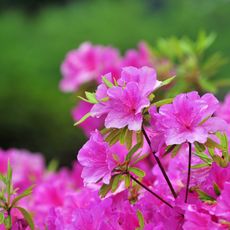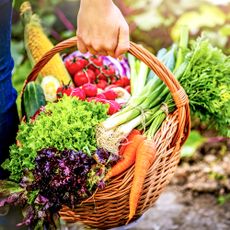Top 10 Questions About Soil

Here at Gardening Know How we get lots of questions. Our goal is to provide answers with good advice based on experience. Of course, most gardeners know that the key to successful gardens normally begins with healthy soil. Here we have collected the ten most common questions we get asked about garden soil.
1. Did leaves in soil harm my plants?
Leaves can be a good addition to soil as part of balanced nutrient enrichment, but any infected or diseased leaves could also introduce pathogens into the soil. These could potentially harm plants you then put in the ground. Any leaves that appear diseased should be collected and disposed of rather than tilled into the soil. If you are unsure what is in your soil that may be harming plants, contact your county's extension office to ask about a soil test.
2. Is it possible to grow vegetables in containers with soilless mix?
Yes, it is possible to grow plants, including vegetables,without soil. You will need to introduce nutrients through a fertilizer, though. Hydroponics is one option, which involves growing plants with the roots in water and with a liquid fertilizer or nutrient mix added. You can also use a soilless mix to start seedlings that will eventually planted in soil.
You can lower the pH of soil by adding certain materials that are more alkaline,like coffee grounds. Try using an acidic fertilizer, like one with sulfur-coated urea. You can add sphagnum peat or sulfur to the top of the soil. Over time, these will decrease the pH. For a quick change in pH, use a little bit of diluted vinegar (about two tablespoons in one gallon of water) to water plants that need more alkaline soil.
Gardening tips, videos, info and more delivered right to your inbox!
Sign up for the Gardening Know How newsletter today and receive a free copy of our e-book "How to Grow Delicious Tomatoes".
Heat is the best way to sterilize soil, but there are different ways to go about it. You can bake soil in an oven. Set it to 180 to 200 degrees (82 to 93 Celsius) and let it bake for about 30 minutes. Just make sure the soil is no more than four inches (10 cm.) deep to ensure it heats through. Alternatively, try microwaving moist soil for 90 seconds for every couple of pounds. Steaming soil is also an option, and as with baking you need the soil to get close to 200 degrees for about 30 minutes. Use a pressure cooker or trays of soil over boiling water to steam sterilize.
5. I have heavy clay soil. Can I till it over?
It's best to amend heavy clay soil rather than just tilling it. Work in organic material, like compost, into the top four to six inches (10 to 15 cm.) of soil.The soil will still be heavy, but if you also add organic material that decays more slowly as a top layer, over time this will lighten the soil. Try bark or wood chips for this layer.
6. What is best (and easiest) method for tilling the soil of a small vegetable garden?
The simplest way to till soil in a small plot is to do it by hand. Try double digging for an easy method. Spread compost on the area first. Then dig a ditch along one edge of the garden, to a depth of about ten inches (25 cm.). Dig another ditch alongside it and fill in the first ditch with the soil from the second. Continue this across the width of your vegetable patch.
7. How to know if soil is contaminated?
Clues that your soil may be contaminated with something include difficulty growing any plants or getting stunted or diseased plants. The best way to know for sure is to have a soil test performed. You can do this by contacting your county's extension office.
8. Why are there holes in my soil?
There could be a number of reasons for holes, but the most likely is that birds are making them. Crows and jays are well known to poke holes in turf or soil to hide food. They then cover that hole up again with soil, grass, or other materials on hand. If it looks like holes about the sizeof a bird's beak were made and then covered again, birds are probably the culprits. Insects and small wildlife are also known to create holes in the lawn or garden soil.
9. How to remove fungus from seed starting soil?
Seed starting soil infected with fungus will harm your seedlings, potentially even before the seeds germinate. You can treat the soil with heat, baking it in the oven at 200 degrees for about 30 minutes. Remove any seeds or seedlings first, of course. Or you can start over with pre-treated soil. Just be sure you sterilize the container first. Starting seeds indoors with a sterilized soil mix will help you avoid fungal infections that may affect them outdoors in beds.
10. What to do for soil that stays too wet?
Correcting soil that stays soggy can be very labor and time intensive. It involves improving drainage by elevating a bed or adding a layer of gravel underneath. Either way, it is easier to not plant in these areas or to choose plants that tolerate wet soil. Bog plants are great choices, and include iris, marsh marigold, giant rhubarb, Joe-pye weed, pitcher plants, and Jack-in-the-pulpit. Trees that may work include bald cypress, river birch, cottonwood, willow, green or black ash, and pin oak.
We all have questions now and then, whether long-time gardeners or those just starting out. So if you have a gardening question, get a gardening answer. We're always here to help.

Mary Ellen Ellis has been gardening for over 20 years. With degrees in Chemistry and Biology, Mary Ellen's specialties are flowers, native plants, and herbs.
-
 Ideal Azalea Water Requirements – For Lush, Healthy Shrubs That Will Thrive For Years
Ideal Azalea Water Requirements – For Lush, Healthy Shrubs That Will Thrive For YearsWhat are an azalea's water requirements? Learn how to keep these beautiful spring-blooming shrubs happy and healthy in your yard or container garden.
By Amy Grant
-
 7 Vegetables To Plant In April: Start Indoors Or Outside For A Bumper Summer Harvest
7 Vegetables To Plant In April: Start Indoors Or Outside For A Bumper Summer HarvestAchieve your growing ambitions with these best vegetables to plant in April – including cold-hardy crops to sow direct and tender varieties to start indoors
By Mary Ellen Ellis